2012 Chevrolet Camaro ZL1 Review – Video

Having spent my fair share of time flogging the insanely fast and impressively lightweight ZR1 Corvette around race tracks and having not been a fan of the Camaro SS because of its terminal understeer when pushed to the limit, I have to admit to arriving at Virginia International Raceway expecting the Chevrolet Camaro ZL1 to underwhelm me. Making 580 hp from a supercharged V8 similar to that in the ZR1 under the hood there was no question the ZL1 would be outrageously fast in a straight line and produce an intoxicating snarl from its quad tailpipes, but with a curb weight over 4,000 lbs and the unwillingness of the SS’s front tires to follow the turn prescribed by the steering wheel, it was going to take a totally fresh engineering approach to convince me the ZL1 is a legitimate track-day weapon.
FAST FACTS
| 1. A supercharged 6.2L V8 powers the ZL1 with 580 hp and 556 lb-ft of torque. |
| 2. At highway speeds, the magnetic ride samples road conditions once every inch the car travels. |
| 3. The ZL1 is named after an all-aluminum racing mill, which was developed in the late 1960s and installed into just 69 regular-production ‘69 Camaros, making it one of the rarest GM engines ever produced. |
| 4. At 150 mph the ZL1 makes 65-lbs of front downforce thanks to the revised front fascia, splitter and vented hood, while the SS makes 200-lbs of front lift at the same speed. |
FEELING SMUG
Initially, my skepticism seemed well placed, since a short drive on some winding country roads surrounding Virginia International Raceway (VIR) the evening before we were scheduled to turn our hot laps suggested the ZL1 was a big angry gorilla that was going to try to kill me if I asked it to change direction. Thanks to cool and damp road conditions, anything more than tickling the throttle resulted in wheel spin and a whole bunch of e-nanny intervention. In hindsight, the Chevy Sonic we drove from the airport to VIR could have induced similar wheel spin in these conditions, but at the time I was busily ticking off items on my list of preconceived ideas about the ZL1.
EATING CROW
After an impressive presentation by the Camaro design and engineering team highlighting the extensive improvements and refinements they’ve made to the ZL1, I felt a stirring in my pants. It was my cell phone set to vibrate, but I also felt a stirring somewhere else. Perhaps it was some half-forgotten part of my automotive soul reminding me how much fun I had thrashing my dad’s ’98 Camaro Z28 at the racetrack. Whatever it was, despite my early doubts, I was now beginning to embrace the idea that perhaps the ZL1 has actually been reinvented thoroughly enough to make those SS understeer nightmares go away.
Get the Flash Player to see this player.
With a warm and sunny day for our on-track testing, just a single lap around a modified version of VIR’s full course left me with the tangy flavor of crow in my mouth. The first few gulps were a little hard to swallow, but after that it was impossible to wipe the grin off my face because the ZL1 is indisputably built for track-day enthusiasts and road racers like me. Gone was the night terrors-inducing understeer of the SS and in its place a remarkable range of high-tech handling modes made possible by the third-generation Magnetic Ride suspension (a newly revised version of the same magneto-rheological dampers used on the ZR1 and even a few Ferraris) along with the onboard stability and traction control systems.
The result of all this vehicle dynamics voodoo is the ZL1’s five “Performance Traction Management” modes, with PTM2 being the default setting for dry conditions and PTM1 being for wet conditions only. As you move up to PTM3, 4 and 5 you reduce the amount of intervention by the traction and stability control systems to the point that you can really start to hang the tail end out and steer the car with the throttle. You can also completely shut off the PTM system, but with a car this powerful and this heavy, only driving gods need apply.
NOT PERFECT
Of course the ZL1 is still a Camaro, so you’re going to have to live with some cheap looking and feeling plastics inside (which is a bit of a letdown given the $54,995 price tag and given how good GM’s interiors are as of late). Put it this way – you’re definitely not going to confuse the ZL1’s interior with anything from Audi. Headroom continues to be at a premium as well, especially when wearing a helmet. And the sightlines, or lack thereof, continue to be a concern. I can’t imagine trying to park this monster of a muscle car in an underground parking lot or even just parallel parking it without curbing the gorgeous 19-inch forged alloy wheels. And then there’s the 4,000+ lb curb weight, which does mean you’ll be visiting the gas station regularly and replacing other consumables more often as well (brake pads, rotors and tires among them).
BUT SURPRISINGLY CLOSE TO IT
Despite its considerable heft, the ZL1 manages to feel amazingly agile. It’s only when pounding the curbs through the Snake lower esses or quickly changing direction through the Madison Avenue chicane halfway down VIR’s long back straight that you get a sense of the Camaro’s mass, the gargantuan 6-piston Brembo brakes and PTM system managing to otherwise conceal it. Repeated abuse of the slow pedal could not induce even a hint of brake fade, and unlike the SS where aerodynamic front lift kills turn-in response, the ZL1’s vastly improved aero package (producing 65 lbs of front downforce at 150 mph, as opposed to the 200 lbs of lift the SS generates at the same speed) means that the front tires now have the bite required to attack corner entry with confidence.
Part of the improved turn-in feel is also likely a result of refinements made to the ZL1’s electric power steering, which slows and firms up at higher speeds for added stability. A lot of other small details combine to make the ZL1 the track star it is, including moving the rear swaybar mounting points outboard for a rear end that’s not only better able to control body roll but also has a more planted and stable feel to it while accelerating out of turns. Goodyear’s vastly improved G:2 Eagle F1 Supercar tires also provide significantly more mechanical grip than the previous generation rubber.
The Camaro design team has also classed things up a bit inside, breaking up the sea of plastic across the dash with a suede section that ties in nicely with the rather handsome leather and suede microfiber wrapped ZL1-embroided seats. Although I overheard some of the other journalists commenting that the ZL1’s seats have too much cushioning, my middle-age posterior found them to be comfy and reasonably supportive. The ZL1’s steering wheel is also a vast improvement over the one found in the SS, having clearly been designed with track driving in mind. Not only is it smaller in diameter, but it’s also contoured like a racing steering wheel and wrapped in your choice of leather or suede (as part of the optional suede package).
And then there’s the transmission. I’ve always found the Corvette’s gearbox to be clunky and slow to synchronize with the next gear, so I was expecting more of the same with the ZL1. Instead, the Tremec TR6060, thanks to a revised synchro package and a newly designed short throw shifter, delivers precise and crisp shifting action that rivals the best manual gearboxes I’ve sampled. It’s not as laser-quick as a Honda S2000’s transmission, but for a gearbox stout enough to contain 566 lb-ft of torque the ZL1’s Tremec is a truly impressive piece of hardware.
THE VERDICT
The proof is in the pudding. Sure, my bowl of pudding may have a bit of a crowy aftertaste to it, but that’s OK. I can live with it in light of the fact that the team behind the ZL1 has performed a miracle worthy of recognition in Vatican City. What was once just another retro-styled muscle car aimed at pot-bellied men across America is now a fire-breathing supercar comparable to the Nissan GT-R. And when compared to its most natural rival, Ford’s Shelby GT500, the Camaro ZL1 has clocked a time around VIR’s Grand circuit more than 6-seconds a lap faster than the Mustang. Oh, and it’s also faster than the Nissan GT-R and Porsche GT3 around this same circuit (though both are faster around the Nurburgring than the ZL1’s still-impressive 7:41 lap time).
There’s no denying the Camaro ZL1 is a big heavy coupe and its in-your-face retro styling isn’t likely to connect with many Gen Y buyers. But at $54,995 it’s one hell of a performance bargain and that’s something we can all appreciate. At just under half the price of a Corvette ZR1, you get a similar supercharged 6.2-liter V8, semi-usable back seats, and a more sophisticated version of the already excellent magnetic ride system. Throw the versatility of the new Performance Traction Management system into the mix and the ZL1 truly sheds its skin as an homage to a by-gone era and emerges like a phoenix as a modern-day sports car (minus the interior, which really could use a more thorough updating).
Related Reading
2010 Chevy Corvette ZR1 Review
2011 Chevy Camaro SS Review
2012 Ford Mustang Boss 302 Review
2011 Ford Shelby GT500 Review
LOVE IT
- Magnetic Ride gives you the best of both worlds
- Performance Traction Management lets driver gradually reduce electronic intervention
- Aerodynamic improvements have transformed front end grip and stability, especially at high speeds
LEAVE IT
- Did we mention it weighs over 4,000 lbs?
- Visibility isn’t great, especially rearward
- Interior plastics aren’t up to par with the ZL1 seats, steering wheel or price tag

Some say he's closely related to Bigfoot and that he's a former Canadian Touring Car Champion. All we know is he's the AutoGuide Stig! A thesis defense away from being your intellectual superior he's a professor of vehicle handling dynamics. The part-time touring car and time attack racer is faster (much faster) than your average auto journalist.
More by Dave Pratte














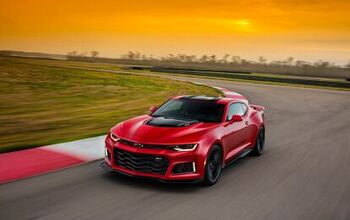
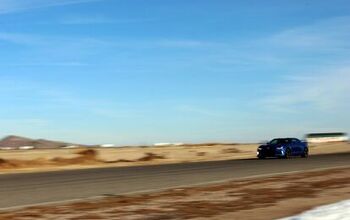
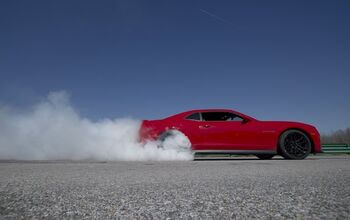

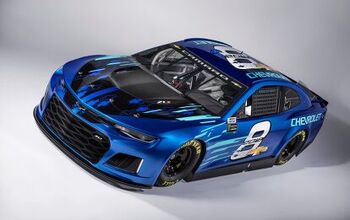
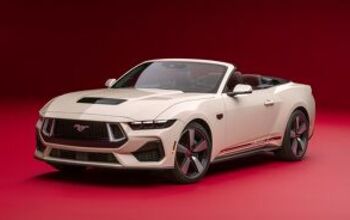
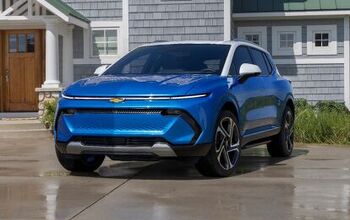

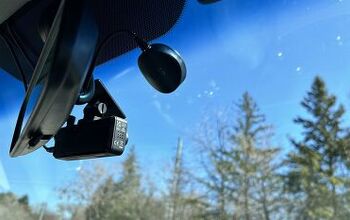
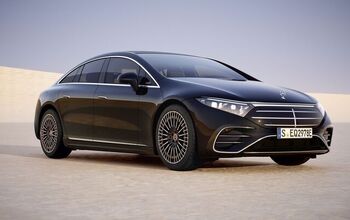


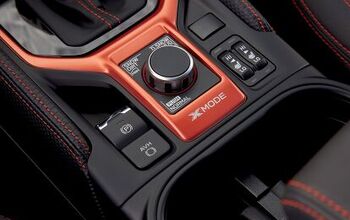
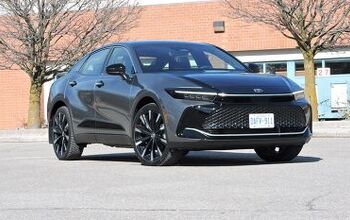
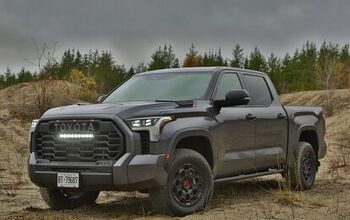
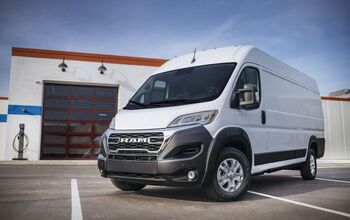

Comments
Join the conversation